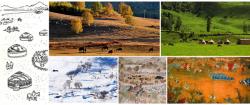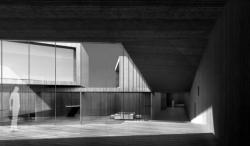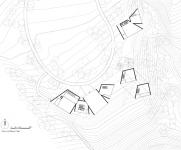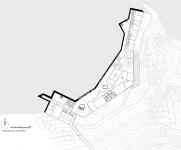This project is located in Chengde Mulan Paddock, which is endowed with unparalleled natural landscape and scenery. Mulan Paddock was once the biggest royal hunting ground in the Qing dynasty. Emperors had been to Mulan Paddock many times for hunting over the 15 decades, including Kangxi Emperor and Qianlong Emperor.
In order to create a landscape which has the least impact on the original surroundings, most of the architecture is buried underground as a part of the scenery. Only a few isolated units on the ground complete the landscape, showing great respects to nature and local climate.
Meanwhile, based on the local biological communities, the buildings above the ground form a cluster with individuals. An image of cluster is perfectly presented by the sporadic layout of a group of similar units located along the mountain contour lines. Each unit forwards a different direction, hence letting in a large scale of prairie view with four seasons and alternating day and night.
“Nomads live by grassland” is a typical nomadic culture. Here each unit could be viewed as a moving tent. Lifted above the ground, the design is intended to create a sense of floating. There is a dynamic and free status between the architecture and the ground, which corresponds to the personalities and characteristics of pastoral nomads.
2011
Location: Chengde, Hebei, China/
Total Floor Area: 3500 sq.m.
Architects: Shan Jun/
Design Team: Tie Lei, Wang Xin, Wei Shiyu, Lu Qian, Yang Lu
Favorited 2 times










